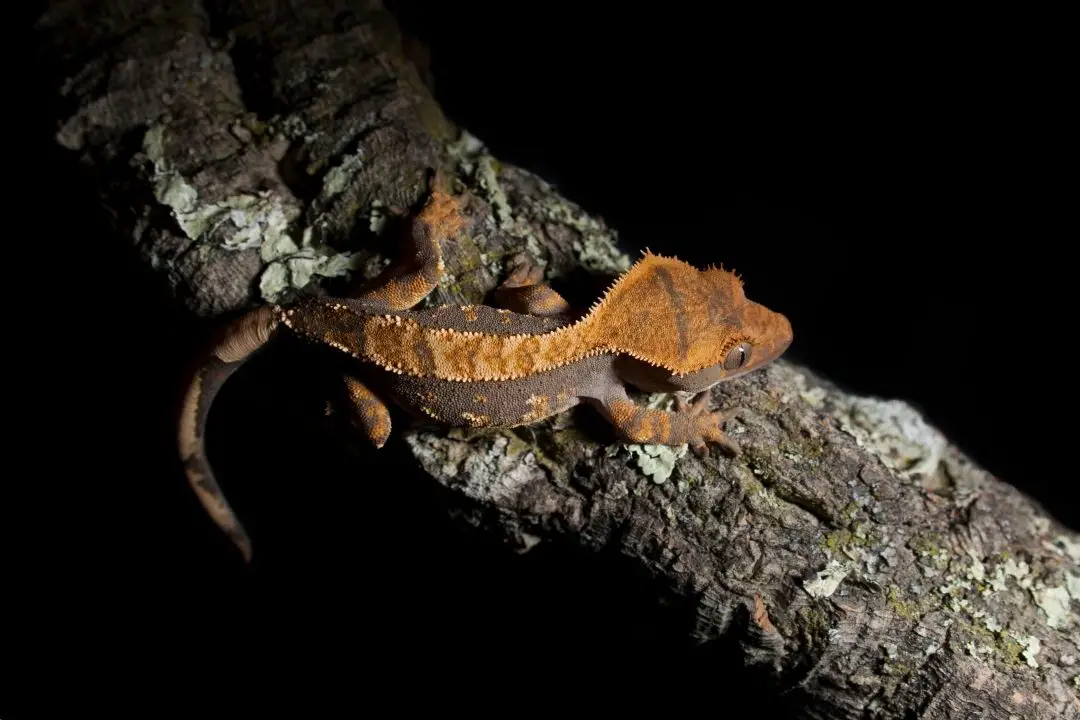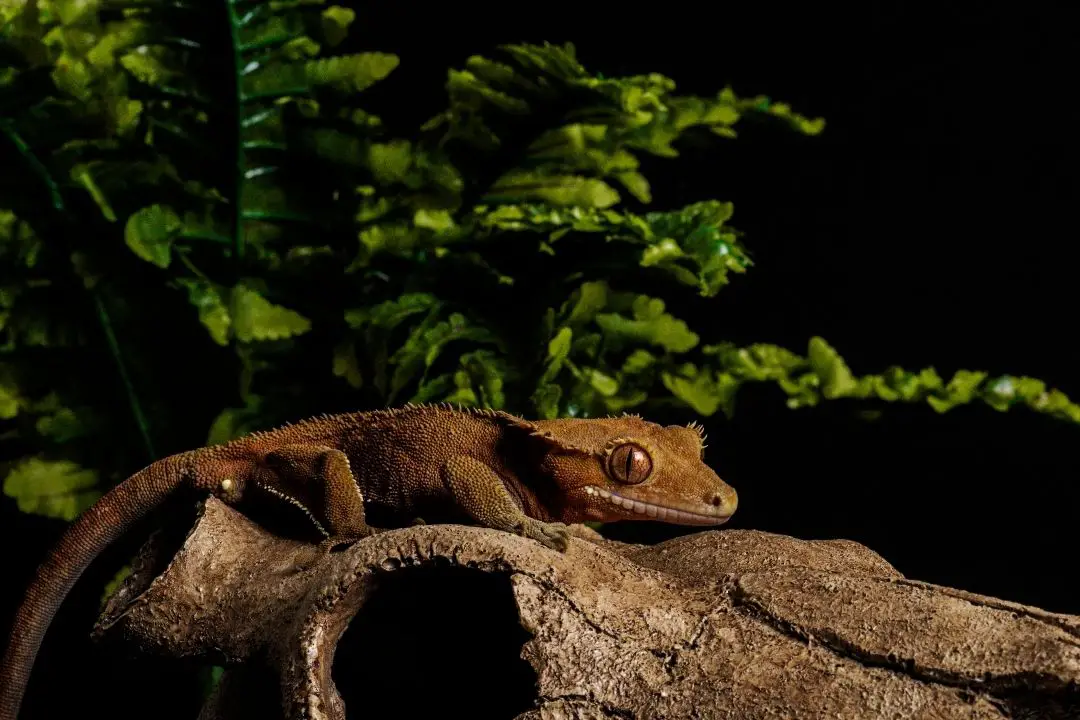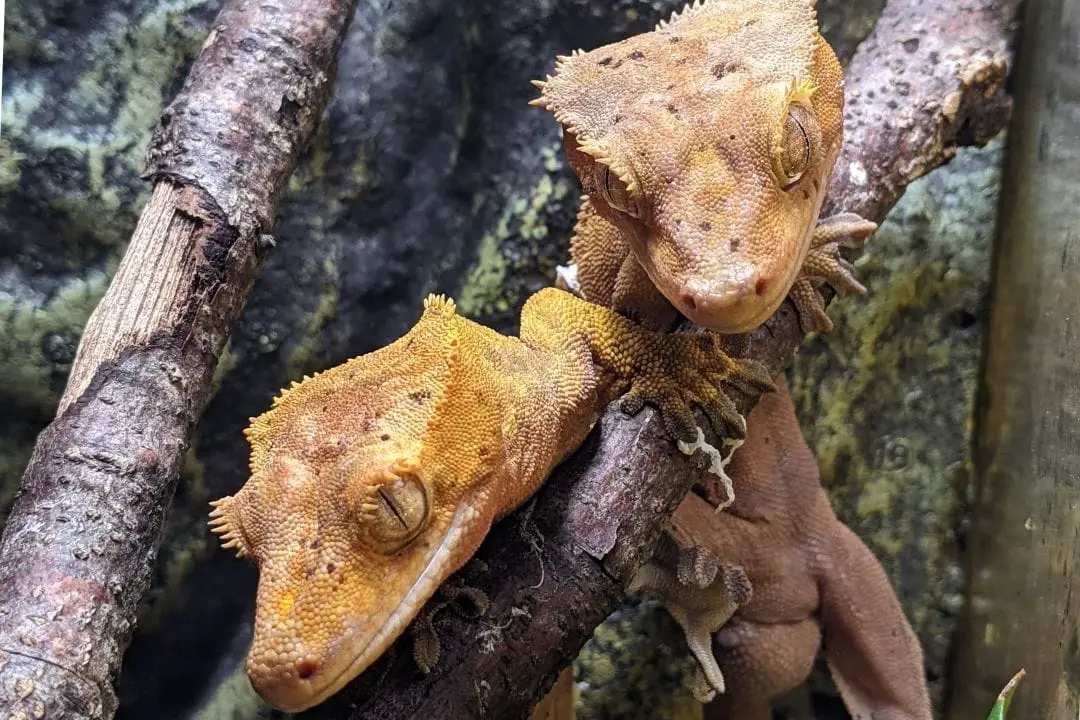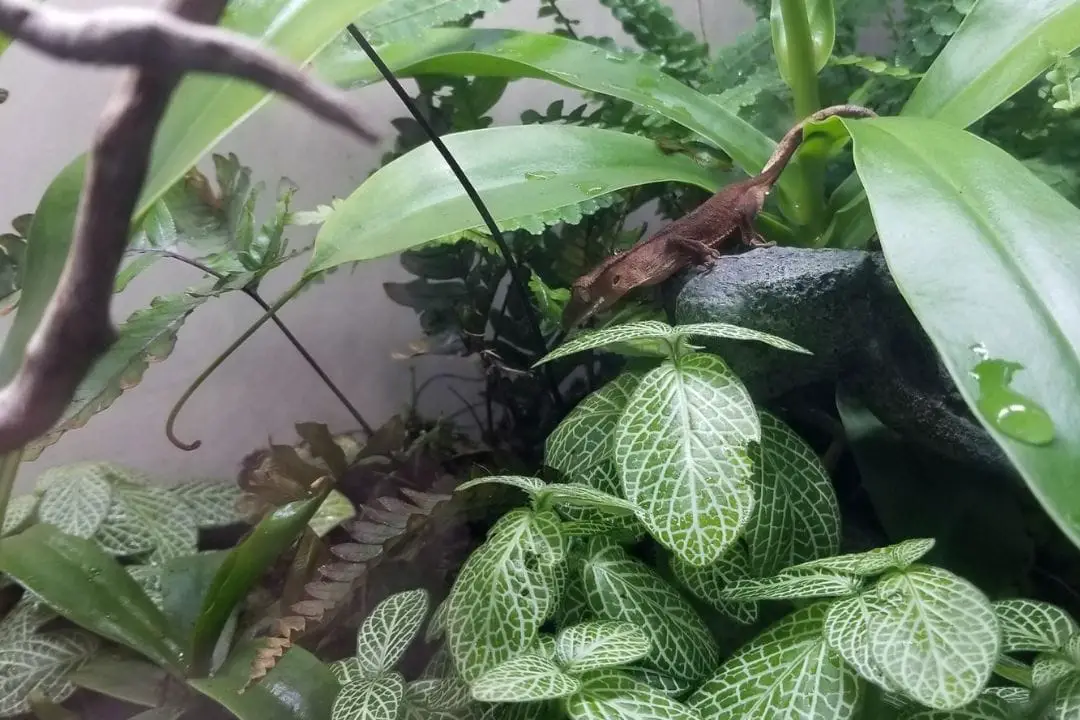Crested geckos (Correlophus ciliatus) are small-to-medium geckos native to only two islands in New Caledonia.
They are a popular pet, but you may be wondering:
How big are crested geckos?
On average, an adult crested gecko will be 6-9 inches long with an average length of just under 8 inches. They will weigh 30 to 35 grams as an adult.
For a complete guide to enclosure setup, feeding, daily care and breeding,
check out my Crested Gecko Care Sheet
Length
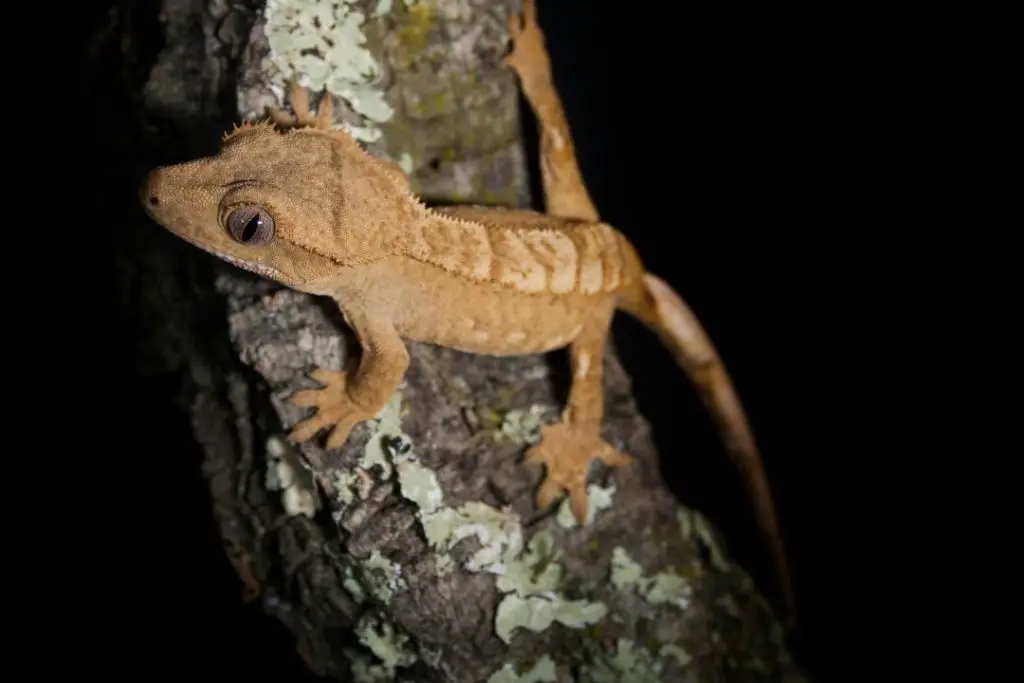
Crested geckos are fairly small when it comes to lizards.
They hatch at only around 2.5 inches long. By the time they reach sexual maturity between 18 months and 2 years, they will be 6-10 inches long including the 4-6 inch tail.
The tail is prehensile and very likely to be dropped. Since this tail has the same sticky pads as the feet, losing the tail does mean the gecko loses some ability to hang on.
They do not regrow the tail, but they can still live a full life without it. They tend to be 4-5 inches once they lose the tail.
Don’t feel bad about your gecko dropping its tail.
This is called autotomy and many crested geckos will drop their tail when startled by a loud noise such as thunder.
Some animals will only drop the tail if you grab it, while others will startle and drop it from something as simple as a car backfiring.
Crested Gecko Size and Weight
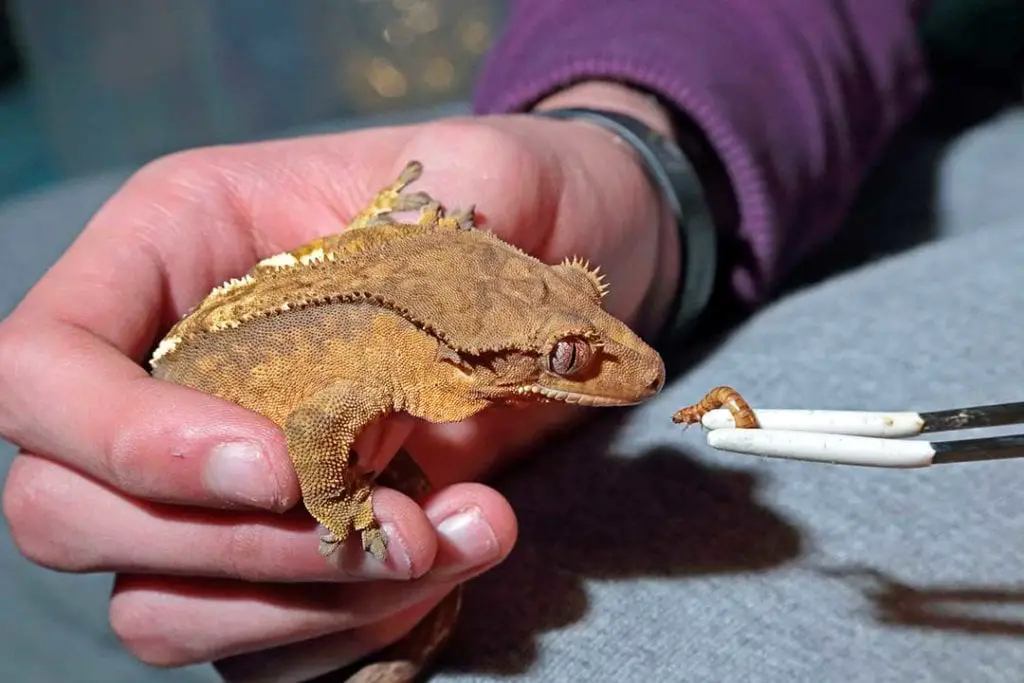
Crested geckos tend to hatch at around 1.5-2 grams.
The exact growth rate depends on many factors including temperature, stress, and diet. Generally, a gecko that hatches at a lighter weight will take longer to grow since they can only fit so much food in their mouths.
Geckos are considered juveniles until they are around 13 grams since this is around when they are old enough to easily determine the animal’s sex.
Most geckos at this point grow rapidly until they reach about 25 grams. Then they slow down until they reach a breeding weight of 25 grams for males and 35 grams minimum for a female.
Male crested geckos will be around 25-35 grams as adults and females will be anywhere from 35-50 grams.
Heavier female crested geckos with more fat reserves may struggle to breed, so they need to be encouraged to exercise. This will typically be between 18 months and 2 years of age.
Most breeders will allow males to breed at 25 grams, but will not allow females to breed until she is at least around 2 years old to give their organs more time to develop.
Breeding a female too early causes her growth to stunt and may damage her organs.
Factors That Affect Growth
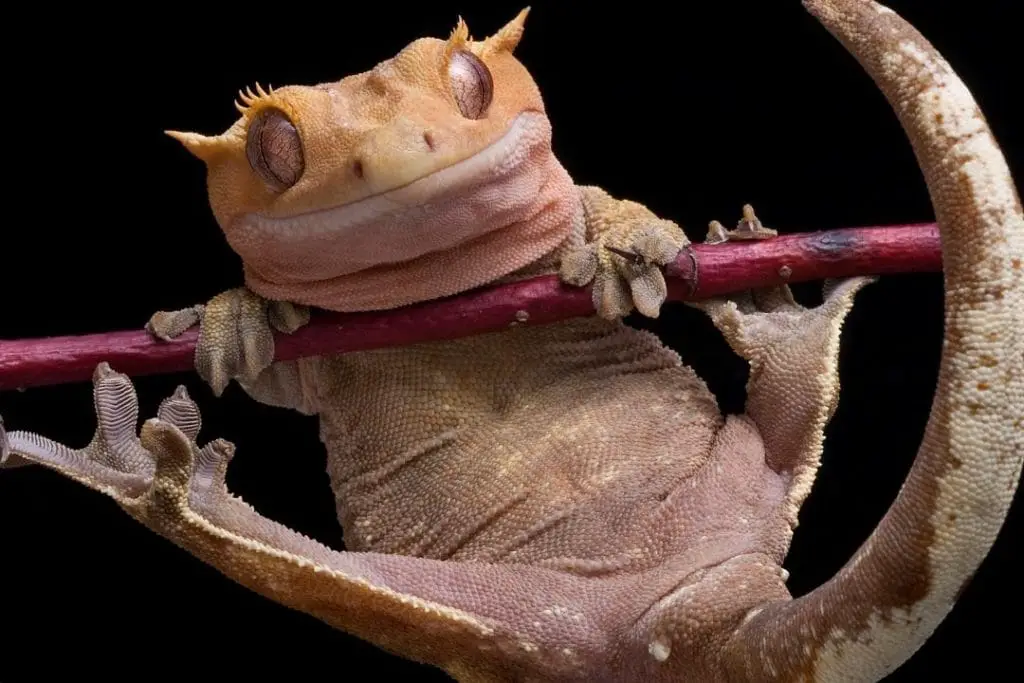
The biggest determination for how your crested gecko will grow depends on nutrition.
The old-school way of feeding pureed fruits and insects can cause a gecko to gain weight quickly, but they may suffer from vitamin deficiencies and stunted growth if they are bred young.
Modern recommendations for diet such as using commercial crested gecko diet powder and gut-loaded insects will result in steady growth with a healthy body condition so long as the animal can exercise.
Zoo Med Crested Gecko Food
- Can be served wet or dry to your scaly sidekick.
- Formulated using the latest nutritional information and techniques.
- May also be enjoyed by day geckos, gargoyle geckos and other omnivorous species.
- Contains probiotics for better digestion, stool consistency, weight management and development.
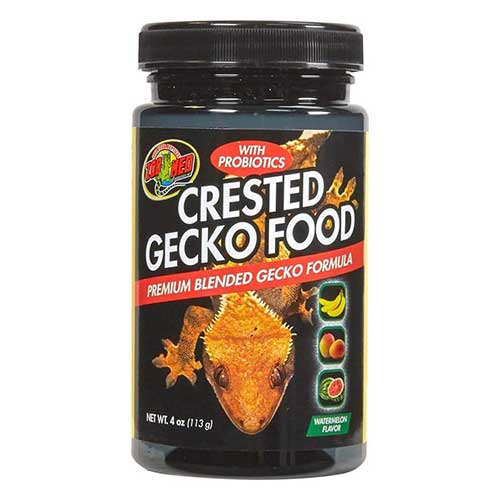
Geckos that do not have the proper amounts of protein, calcium, and other nutrients will suffer from problems like Metabolic Bone Disease that can cause serious health problems.
More protein from insects can create faster growth, but you should be careful of the fat amounts in your feeders (wild crested geckos barely have any) and make sure you do not offer anything with high amounts of chitin.
Temperature does seem to affect growth. Geckos kept in the upper range of their safe temperature range tend to grow faster, we try to reproduce the crested gecko habitat.
Generally, geckos kept at 75-78 degrees during the spring and into early fall will grow more quickly.
If you want to breed your geckos, you should give them a cooler period in the winter to make sure they have time to stock up on nutrients like calcium.
It has also been noted that slower incubation will produce larger hatchlings that grow quickly.
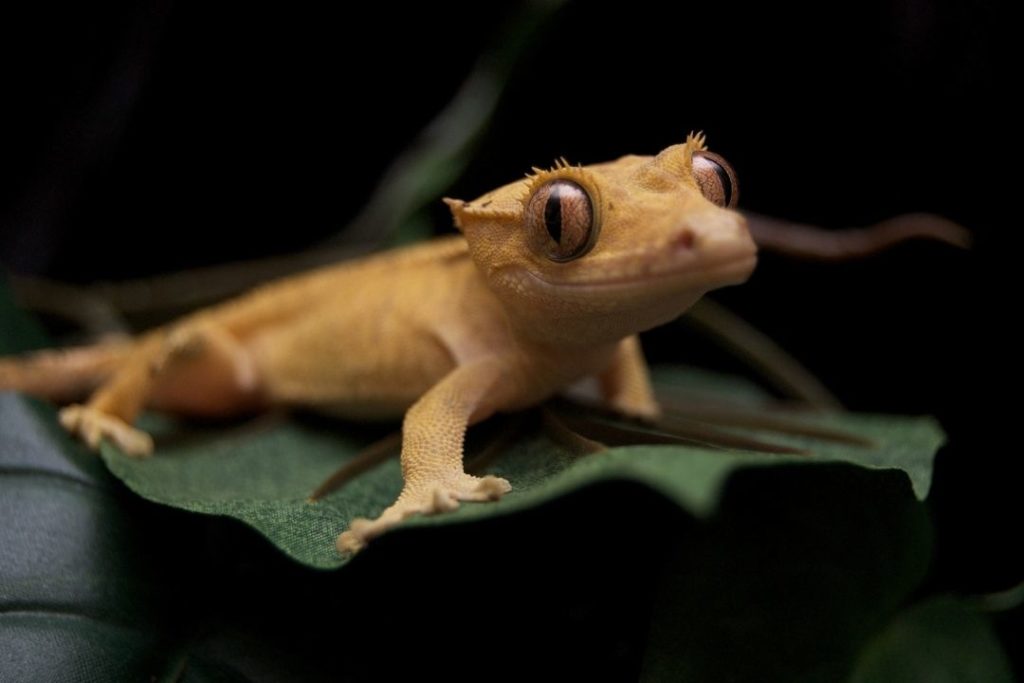
80 degree incubation can result in hatchlings that are only 1 gram, while eggs incubated at 70 degrees will produce 2 gram hatchlings more often.
Young and baby crested geckos housed together may get stressed out by other geckos in the enclosure may cease eating until they feel safer.
Other geckos may also bully them away from food and water.
If you handle young geckos too often or change up the enclosure too much, they may refuse to eat for a few weeks.
Crested geckos are nocturnal so avoid disturbing them during daytime.
Some geckos are also very picky about changes in their diet. If you want your gecko to eat consistently, it is best to keep the diet consistent.
Dehydration can cause problems with processing proteins. It can also cause your gecko to refuse to eat and can cause renal failure.
The humidity should be kept in the right range and water should be available at all times. If the humidity gets too high, your gecko can suffer respiratory problems that may end in death.
You should also keep up with your gecko’s health if you want it to grow quickly. Parasites can seriously stunt a crested gecko’s growth.
Make sure your gecko is checked for parasites at your vet and treated promptly. You should make sure any feeder insects are captive-bred and parasite-free.
Keeping your gecko healthy and free from stress will help make sure they grow properly, increase your crested gecko lifespan and have a long and healthy life.
Crested Gecko Growth Rate
This is a quick summary of crested gecko growth rate. Please note that some animals may grow faster or slower because of factors you can’t control like genetics.
It is always best to aim for slow and steady growth to make sure your pet will be healthy in the long term.
Your gecko may reach its full length much more quickly than it will reach its adult weight. Generally, a juvenile crested gecko is long and lanky compared to a sexually mature adult.
Note, this chart assumes your gecko doesn’t drop its tail.
- At hatching: 1.5-2 grams, 2-2.5 inches long
- 3 months: 3 grams, 3-4 inches
- 6 months: 9 grams, 5-7 inches
- 9 months: 17 grams, 6-9 inches
- 12 months: 29 grams, 6-10 inches
- 15 months: 33 grams, 6-10 inches
At this point, many male geckos will be done growing. Females will keep gaining until close to their second birthday.
At this point, your gecko will likely be sexually mature and ready to breed.
All animals are individuals, but this is a pretty common growth rate.
If you have any questions or comments, please leave them below.
